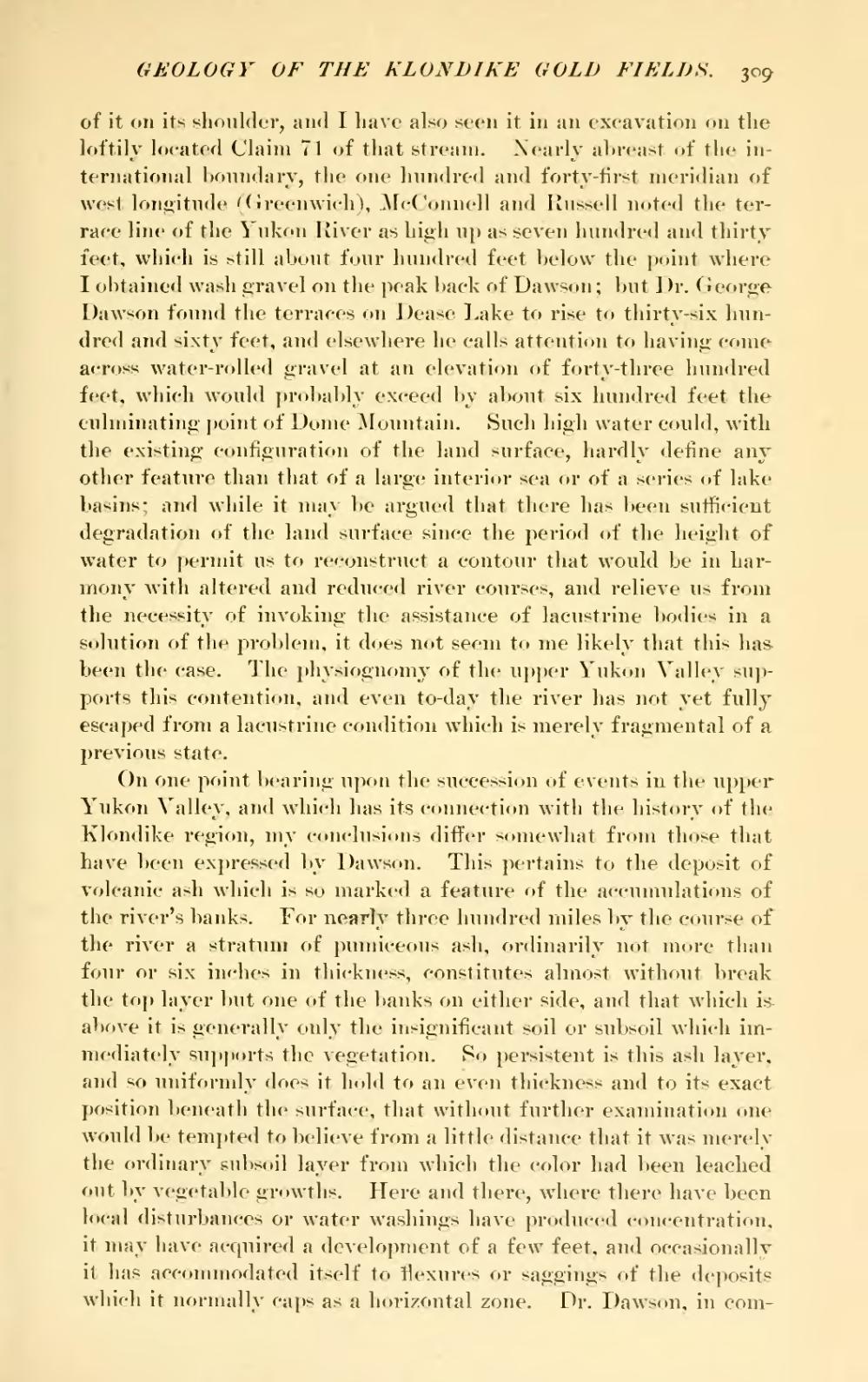of it on its shoulder, and I have also seen it in an excavation on the loftily located Claim 71 of that stream. Nearly abreast of the international boundary, the one hundred and forty-first meridian of west longitude (Greenwich), McConnell and Russell noted the terrace line of the Yukon River as high up as seven hundred and thirty feet, which is still about four hundred feet below the point where I obtained wash gravel on the peak back of Dawson; but Dr. George Dawson found the terraces on Dease Lake to rise to thirty-six hundred and sixty feet, and elsewhere he calls attention to having come across water-rolled gravel at an elevation of forty-three hundred feet, which would probably exceed by about six hundred feet the culminating point of Dome Mountain. Such high water could, with the existing configuration of the land surface, hardly define any other feature than that of a large interior sea or of a series of lake basins; and while it may be argued that there has been sufficient degradation of the land surface since the period of the height of water to permit us to reconstruct a contour that would be in harmony with altered and reduced river courses, and relieve us from the necessity of invoking the assistance of lacustrine bodies in a solution of the problem, it does not seem to me likely that this has been the case. The physiognomy of the upper Yukon Valley supports this contention, and even to-day the river has not yet fully escaped from a lacustrine condition which is merely fragmental of a previous state.
On one point bearing upon the succession of events in the upper Yukon Valley, and which has its connection with the history of the Klondike region, my conclusions differ somewhat from those that have been expressed by Dawson. This pertains to the deposit of volcanic ash which is so marked a feature of the accumulations of the river's banks. For nearly three hundred miles by the course of the river a stratum of pumiceous ash, ordinarily not more than four or six inches in thickness, constitutes almost without break the top layer but one of the banks on either side, and that which is above it is generally only the insignificant soil or subsoil which immediately supports the vegetation. So persistent is this ash layer, and so uniformly does it hold to an even thickness and to its exact position beneath the surface, that without further examination one would be tempted to believe from a little distance that it was merely the ordinary subsoil layer from which the color had been leached out by vegetable growths. Here and there, where there have been local disturbances or water washings have produced concentration, it may have acquired a development of a few feet, and occasionally it has accommodated itself to flexures or saggings of the deposits which it normally caps as a horizontal zone. Dr. Dawson, in com-
